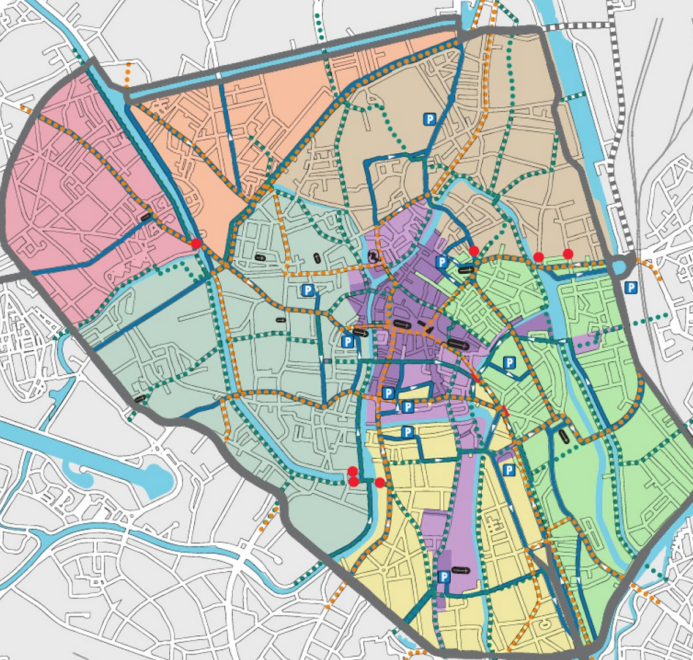
Cities, SI Urban 2/2021
Gent – The car-free city
Even in the 1980s, transport in the medieval city of Ghent had reached its limits. The pollution from noise, exhaust fumes, congestion and lack of parking got so bad that residents were moving away from the city, which had a population of 260,000. Consequently, Ghent spent two years developing the radical mobility concept that took effect in 2017.
“The aims of the ‘Circulation Plan’ are: a car-free city centre, improved quality of life, greater safety and accessibility, as well as climate neutrality by 2050,” principal private secretary for mobility, urban planning and public space in the city of Ghent, Ann Plas. shares as part of the Salzburger Verkehrstage transport conference.
Initial situation
The main problem in Belgium’s second city was too much motorised traffic in the city centre (see diagram on bottom left). Of this, eleven percent was pure through traffic and 28 percent was “semi-through traffic”, i.e. journeys that avoided parts of the ring road. Destination and origin traffic made up over half the traffic (51 percent) and journeys within the core city accounted for nine percent.
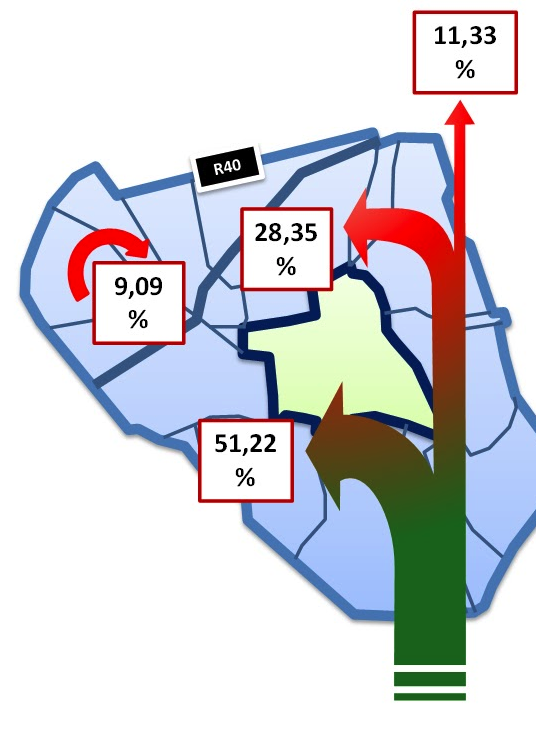
Initial position: Massive through traffic in Ghent.
“Ghent traffic centre: smooth operation, real-time information, dynamic control” – this is how the city is promoting its mobility plan. Pictures: City of Ghent
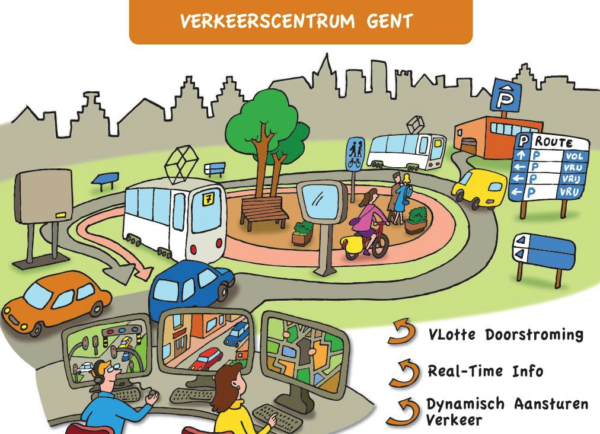
Through traffic prohibited
“We were therefore facing the question of how to exclude through traffic,” Plas says. The answer was to divide the city centre into six zones (see diagram above), with direct journeys between the zones being permitted only for blue-light vehicles, taxis and buses.
“All other drivers have to use the ring road, outside the city,” Plas emphasises. Dedicated routes were established respectively for cyclists, public transport and those looking for parking, in order to reduce conflictsbetweenroadusers.Aspeed limit of 30 km/h is now in place in most of the urban area.
To enforce the traffic control, the city installed blocks, bollards, plants, benches and lines on the roads between the zones. The crossing points are also video-monitored and traffic offenders are consistently punished, as only destination traffic is allowed into the centre.
Controlled parking
The “parking plan” was a further step. Whilst there was massive deconstruction of inner-city car parks aboveground,thecitycreatedpark- and-ride facilities outside the ring road as well as underground car parks in the city centre.
An extensive control system ensures that only those who can park in the city are able and permitted to drive in. The rule here is: the closer to the centre, the more expensive the parking ticket.
“The involvement of residents was vitally important here; we had to allay the fears of residents, business people and restaurateurs,” Plas reports. Short-term parking zones and residents’ parking spaces are therefore also provided.
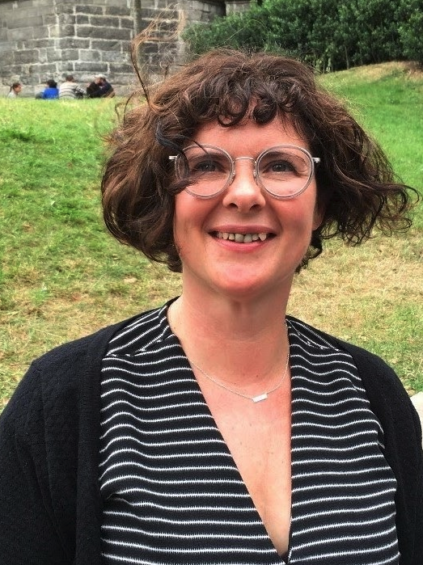
Ann Plas, principal private secre- tary for mobility, urban planning and public space in Ghent
Ann Plas, principal private secre- tary for mobility, urban planning and public space in Ghent
“A well-considered transport plan is a quick way to improve a city’s quality of life.”
The provision of the tram makes a huge contribution to the car-free city. Photo: De Lijn
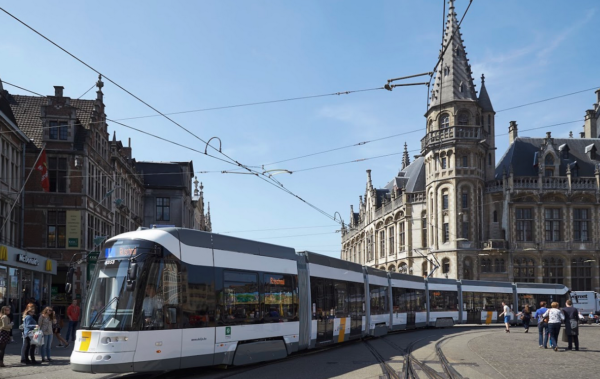
Free shuttle
So that everyone else, such as long- term parkers and commuters, can still get into the city, Ghent has bolstered public transport and introduced a free park-and-ride shuttle. In addition, the regular city bus routes, tram lines and even an electric boat ensure environmentally friendly mobility.
Night buses and free transport for children up to the age of 14 make the local public transport even more attractive. An extension of the tram lines is planned.
Revaluation of the bicycle
One important element of the “Circulation Plan” is expansion of the cycling infrastructure. Ghent has invested heavily in exclusive passages, bridges and cycle highways. Furthermore, the city council has also installed a sophisticated parking system for bicycles.
“This all creates the framework for the necessary cycling culture, which we are improving with the provision of service stations and cycling ambassadors. Local businesses are helping us here with services and offers for cyclists,” Plas emphasises.
Roads as a social space
For pedestrians, roads are being rededicated as promenades, school streets and play streets (at least at certain times or on certain days). Moreover, for three months of the year, residents can transform their own residential streets into “living streets” and use the space to meet people, for street parties and for green areas.
2030 targets achieved in 2019
There were and are 145 million euros available for the major project – which has rapidly achieved considerable success. Between 2012 and 2019, car traffic fell from 55 to 27 percent, whilst bicycle traffic saw a huge increase from 22 to 35 percent.
Public transport grew by eleven percent and now makes up 20 percent of the traffic volume. The proportion of pedestrians also improved, from 14 to 18 percent. In the wake of this, the air quality has improved by a full 25 percent and the number of accidents has fallen significantly.
For the remaining cars, journey times and the time to find a parking space have likewise been reduced. “In 2019, we already achieved the targets for 2030,” Plas appears overwhelmed. Within three years, Ghent has been transformed from a car park into a social venue and postcard idyll. ts







